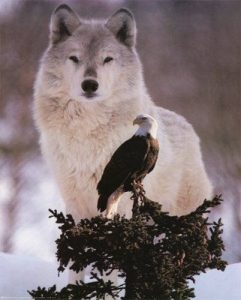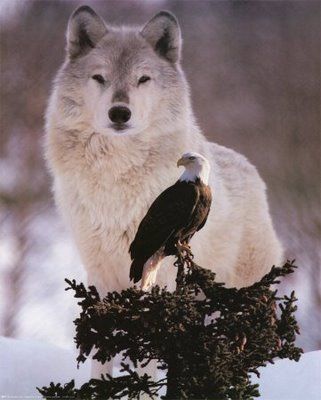On this day, December 28th 1973, the Endangered Species Act was signed into law. It was created to protect animals and plants that were in danger of becoming extinct. “Nothing is more priceless and more worthy of preservation than the rich array of animal life with which our country has been blessed,” said President Richard Nixon while signing the act on December 28, 1973.
History
The Endangered Species Act (ESA) was not the first act of its kind. It replaced the Endangered Species Conservation Act of 1969. But even before that, the U.S. government was steadily making the world a safer place for animals. It started when President Theodore Roosevelt created the first National Wildlife Refuge at Pelican Island, Florida, in 1903.
Later, in 1916, the United States and Great Britain, on the behalf of Canada, created a system of protection for certain birds that migrate between the United States and Canada. Then, on July 3, 1918, the United States passed the Migratory Bird Treaty Act to put the system into action, according to the USFWS.
Almost 50 years later, the Endangered Species Preservation Act of 1966 authorized land acquisition that would be used to conserve selected species of native fish and wildlife. The Endangered Species Conservation Act of 1969 expanded on the 1966 act. It authorized a list of threatened animals that faced worldwide extinction and prohibited importation of threatened animals without a permit. Besides mammals, fish, birds and amphibians, sea creatures such as crustaceans and mollusks were added as protected creatures.
In 1973, the world came together in Washington, D.C., to take the protection of animals even further. According to the U.S. Fish and Wildlife Service, the Convention on International Trade in Endangered Species of Wild Fauna and Flora (CITES) gathered 80 nations to sign a treaty to regulate or prohibit international trade of endangered species except by permit.
Beginning in the early years of the 20th century, the near-extinction of the U.S. bison population and the disappearance of the Passenger Pigeon, or Wild Pigeon, initially drove the call for wildlife conservation. At the time, “naturalists” killed birds and other wildlife to add to their personal collections or to install in museums. Habitat losses grew as communities and farmland expanded. Widespread use of pesticides and the introduction of non-native species also endangered wildlife.
The American bald eagle — designated the national symbol by the Second Continental Congress in 1782 — became one the first species to be placed on the endangered list when there were only 487 nesting pairs. The protective umbrella proved successful: By 2007, the eagle population had recovered sufficiently to be removed from the list. The ESA works!
What the act covers
While the CITES treaty worked to protect species worldwide, the United States created the Endangered Species Act of 1973 to cover domestic issues. It increased protection for all plant and animal species listed as threatened or endangered, as well as their critical habitats. A critical habitat was defined as one that is vital to the survival of endangered or threatened species.
According to the U.S. Fish and Wildlife Service, the act:
- Defined “endangered” and “threatened”;
- Made plants and all invertebrates eligible for protection;
- Expanded on prohibitions for all endangered animal species;
- Allowed the prohibitions to apply to threatened animal species by special regulation;
- Required federal agencies to use their authorities to conserve listed species;
- Prohibited federal agencies from authorizing, funding or carrying out any action that would jeopardize a species, destroy its critical habitat or modify its critical habitat;
- Made matching funds available to states with cooperative agreements;
- Provided funding authority for land acquisition for foreign species;
- Implemented CITES protection in the United States.
Controversy
The act hasn’t been accepted completely by some, though. “The Endangered Species Act is one of the most comprehensive pieces of legislation focusing on wildlife protection; however, it was and remains very controversial,” said Brian Ogle, an anthrozoology instructor at Beacon College in Leesburg, Florida
Some think that the act hinders economic development and provides federal agencies with more control than state agencies. Often, when an endangered animal is found on public land, use of the land is strictly regulated, which can inhibit farming, logging and other commercial use of the land. Some have called for further, in-depth research on the economic effects of the ESA.
Opponents also argue the recovery period for species listed often takes too long and is not as effective as some say it is. “One of the most noticeable changes that came about because of the ESA centers on the land-use provisions and the penalties that can be assigned to public and private landowners for not following the provisions,” said Ogle.
This can be a concern because landowners are central to the protection of many species. Some think that the act does not necessarily help to promote conservation actions or support innovative approaches, but rather it centers on punishing those causing harm to endangered species unfairly.
Since the 115th Congress was sworn in on January 3, 2017, it has already seen the introduction of at least 63 legislative attacks seeking to strip federal protections from specific species or undercutting the ESA. The Endangered Species Act has been in the crosshairs since 2011, when the Republicans gained majority in the U.S. House of Representatives. Since then, nearly 300 attacks have been launched against the Act and individual species. Republicans have repeatedly sought to undermine the Act’s science-based decision-making requirements by prematurely removing protections for wolves through overturning court decisions that found wolves still need protection in places like the western Great Lakes. The two most recent wolf delisting bills are HR424 and S.164 are bipartisan and would remove protections under the ESA for wolves in Wyoming and the western Great Lakes (all of Wisconsin, Michigan, and Minnesota, as well as portions of North Dakota, South Dakota, Iowa, Illinois, Indiana, and Ohio). In addition, this bill prohibits judicial review of the reissued rules. We cannot let this happen!!
House Natural Resources Committee Chairman Rob Bishop said he “would love to invalidate” the law and would need other lawmakers cooperation. The House Resources Committee has recently approved five bills that its members say will modernize the act. The Republican-written bills would strip away the right of citizens and environmental groups to sue to enforce the law; would require the federal government to weigh the economic impacts of listing a species; and would defer listing decisions to state-collected scientific data. One of the bills would delist wolves in the Midwest.
At last count, there were 173 riders attached to the H.R 3354 budget bill , 100 plus are some form of anti-regulations , public lands , wildlife ( wolves ), habitat, ESA and National Parks , Wilderness Areas, and pro grazing riders that take away a lot more of our National Forests.
WE NEED TO ASK OUR SENATORS AND REPRESENTATIVES TO REJECT ANY AND ALL BILL AND RIDERS THAT SEEK TO DISMANTLE THE ESA AND DELIST WOLVES!
The two most powerful decision makers to call first:
Chuck Schumer:
Phone: (202) 224-6542
Dick Durbin:
Phone: (202) 224-2152
Then, call your own members of Congress!
Find your U.S. Representatives here: http://bit.ly/2jE77BE
Find your U.S. Senators here: http://bit.ly/1kyGkev
Remind them that you are a VOTER, and you WILL REMEMBER their decision making on these matters when the time for RE-ELECTION comes!
~ L.G

Sources:
Politico~ Nixon signs Endangered Species Act, Dec. 28, 1973
LIVE SCIENCE ~ Facts About the Endangered Species Act of 1973

Comments
We must be the voice for the voiceless. Protect the animals.
We have got to keep the ESA in place. So very important!
Oh believe me I will be calling. I hate to burst their little killing bubble, but coyote are here to stay. Leave the poor things alone. I see them all the time around here.